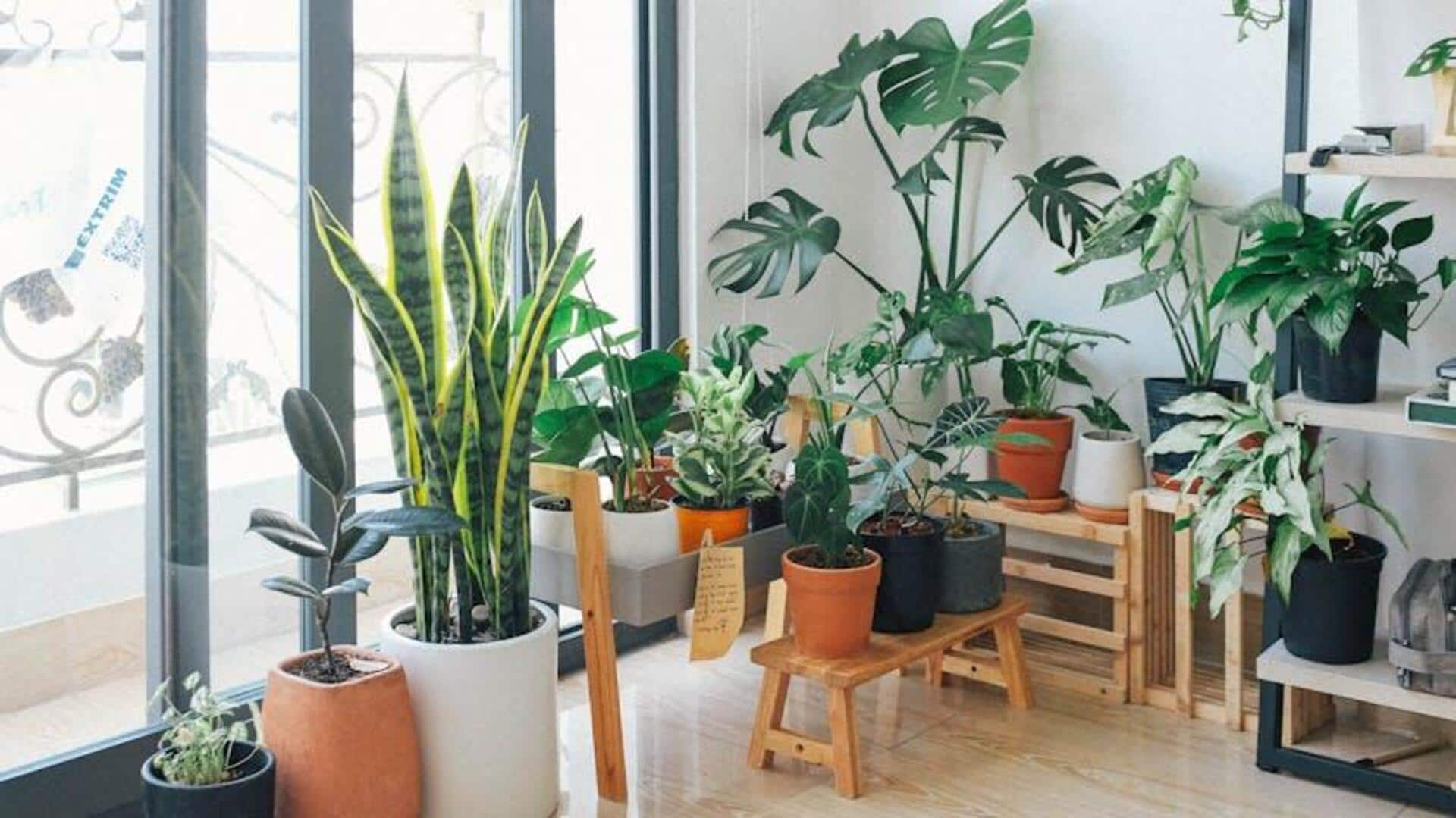
Debunking 5 common myths about indoor plant care
What's the story
Indoor plants are the go-to option for bringing in some greenery to homes and offices.
However, plant care is clouded with a number of myths. These misconceptions can affect the way you maintain your plants, leading to sick plants.
Separating fact from the fiction is important to keep your indoor plants healthy.
Let's look at five common myths about indoor plant care.
Light requirements
Myth: All plants need direct sunlight
Most people think all indoor plants need direct sunlight to thrive.
However, a lot of houseplants actually prefer indirect light or even low-light conditions.
For example, snake plants and pothos flourish in low-light environments.
It's important to do your research on what each plant species you own needs instead of assuming they all require direct sunlight.
Watering frequency
Myth: Watering daily is necessary
Another common myth is that indoor plants require daily watering.
Overwatering can be more detrimental than underwatering, resulting in root rot and other problems.
Most houseplants only need watering when the top inch of soil feels dry.
Humidity, temperature, and even pot size play a role in how frequently a plant needs water.
Humidity levels
Myth: Misting increases humidity significantly
Many people swear by misting leaves for a major boost in humidity around indoor plants.
While misting does provide a temporary moisture boost on leaves, it doesn't really increase overall humidity levels in a room.
To keep tropical plants adequately humid, try using a humidifier or keep a tray of water close to the plant instead.
Fertilization needs
Myth: Fertilizer is always needed year-round
A common misconception is that indoor plants require constant fertilization throughout the year for healthy growth.
However, this ignores the fact that many have dormant periods during which they don't require extra nutrients.
It's generally advisable to fertilize them every four to six weeks during their active growth phases in spring and summer.
This way, they get the right amount of nutrients without being overfed.
Pot size considerations
Myth: Bigger pots mean bigger plants
Many think that repotting houseplants in bigger pots would promote growth, but that's not always the case.
Oversized pots can result in excess moisture, resulting in root rot or mold due to poor drainage.
It is important to choose pots according to individual plant species' needs, mirroring their natural soil and habitat conditions for optimal health.